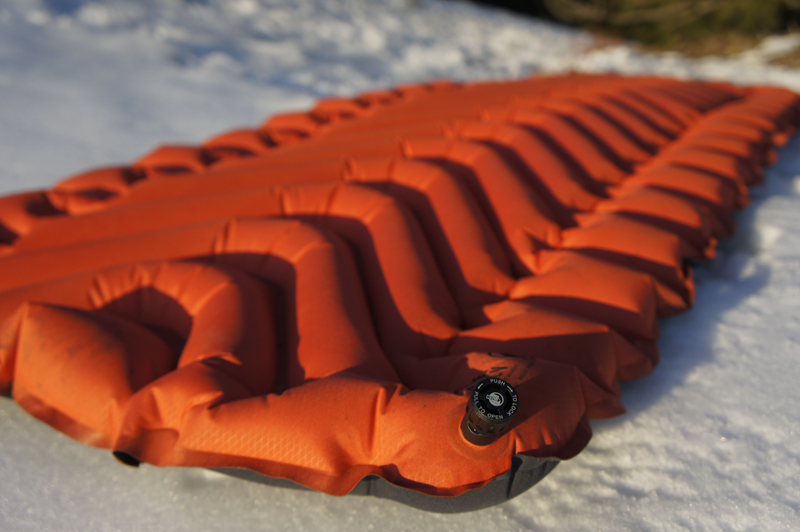
A well-made system will keep you off the ground and buffer conductive and convective heat loss.
I tested Klymit’s Insulated Static V (ISV) in February in Idaho’s Trinity Mountains (a video of the trip is below). It rained and temperatures dipped down into the mid-twenties. Here’s a breakdown on how the pad performed. —Steve Graepel

The Gear: Klymit Insulated Static V (ISV). Available now; $90.
Where To Use It: Four season camping, ski touring, mountaineering.
Who’s It For: Those who sleep cold, in the winter months, or appreciate extra comfort.

Specs: The ISV is constructed from 75-denier polyester (a standard fabric for air mattress pads) and measures 72” x 23” x 2.5”, has a proprietary v-chamber design (think sewn through baffling), and rolls up into a 5” x 9” package (about the size of a Nalgene bottle). About 7 oz. of 60-g synthetic insulation is laminated to both sides, boosting its R value to a conservatively rated 4.4 (ISV). The ISV weighs 25 oz.
Made in: Taiwan











